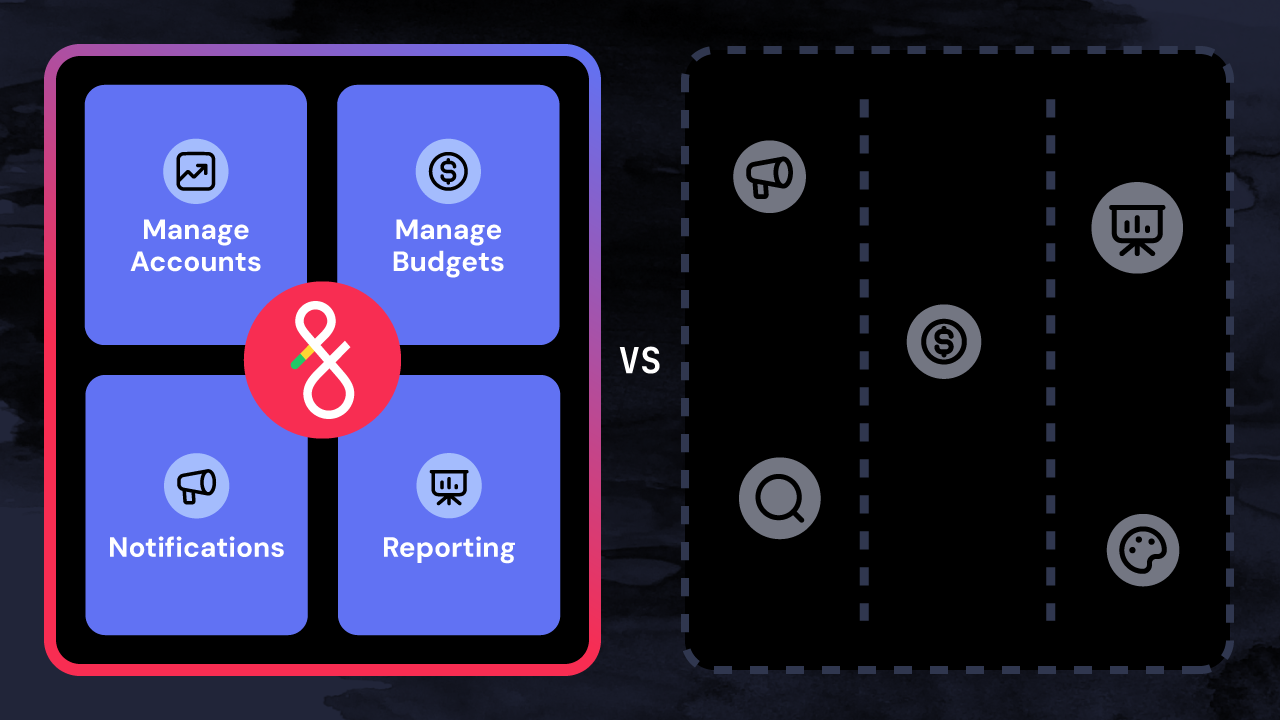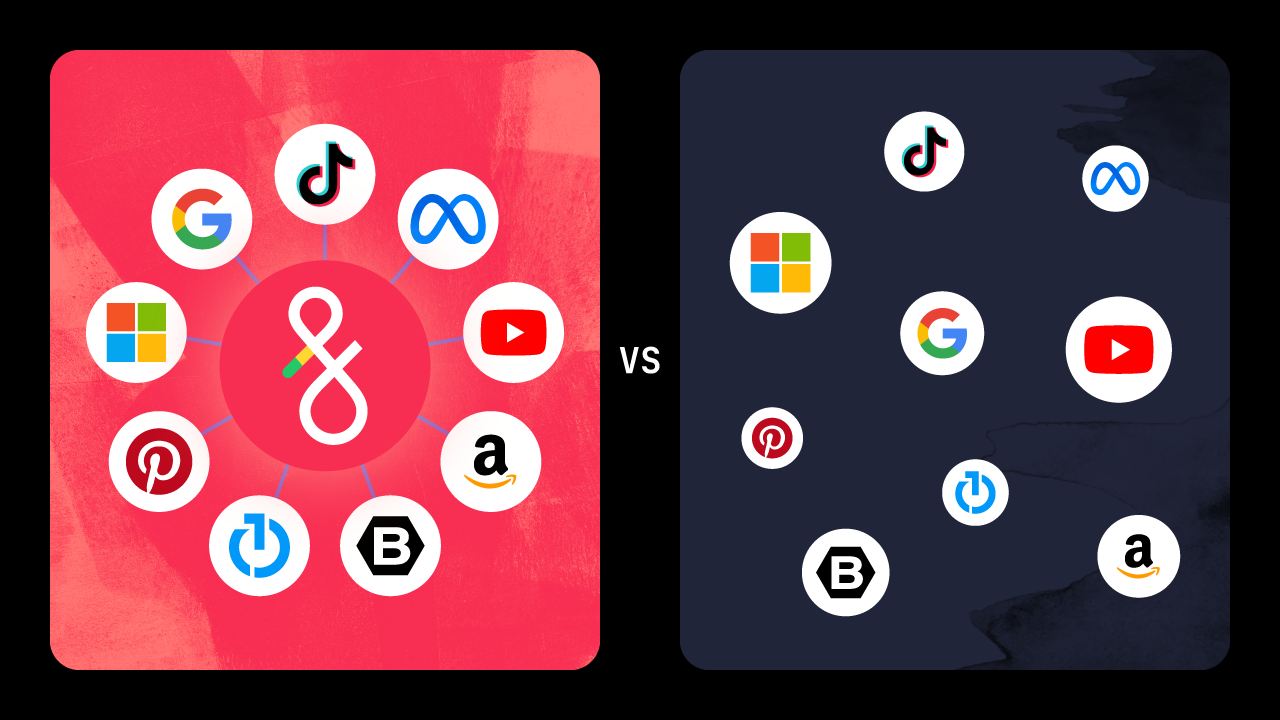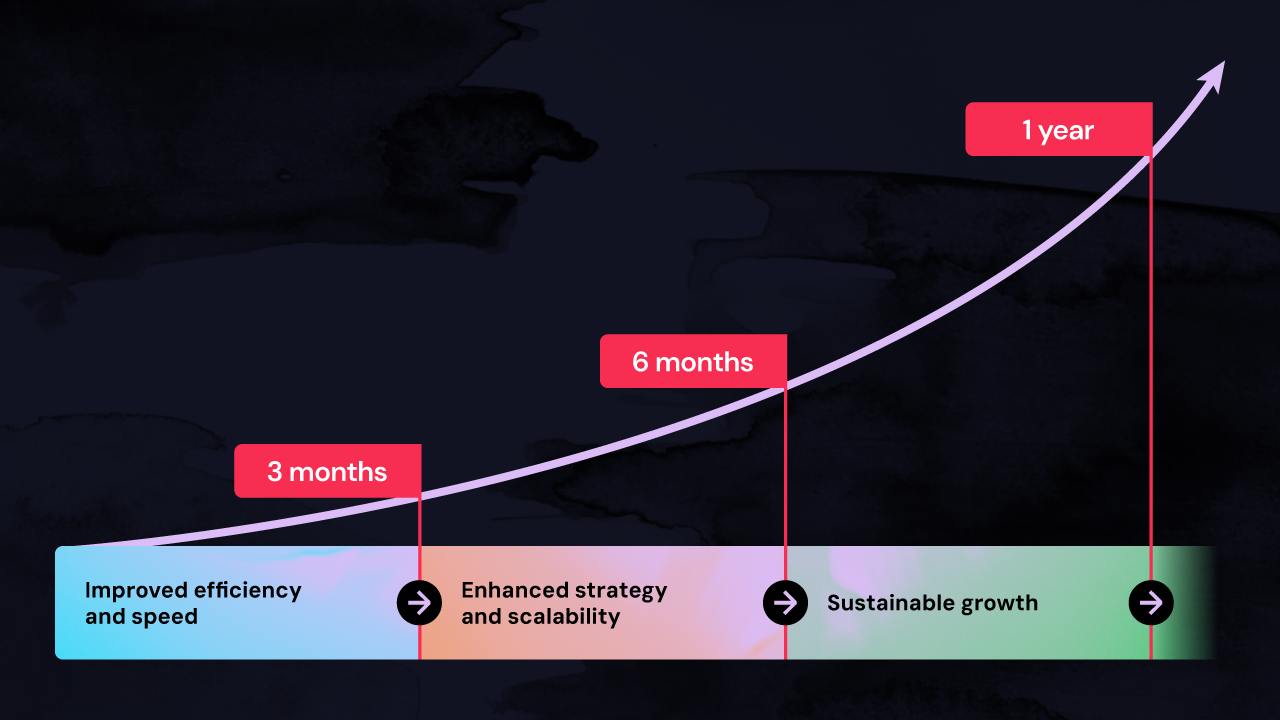Not so long ago, focusing on a few select channels was sufficient for achieving digital advertising goals. Today, the complexity of the digital world demands a full-funnel advertising approach.
Understanding (and activating) the customer journey across multiple touchpoints is crucial if advertisers are to keep delivering results. As advertisers navigate this intricate environment, automation emerges as a key player in managing multi-channel campaigns efficiently.
Andy MacLeay, Vice President of Engagement and Channels at Fluency, sat down with Ben Gilbert, Senior Director of Advertising Innovation at Dealer.com (a Cox automotive brand) to discuss successful ways that advertisers can drive multichannel strategies at scale on the AW360 podcast.
Below are four actionable ways you can accelerate and optimize your multichannel strategy using technology tools, including automation.
1. A full-funnel strategy is no longer nice to have: it is essential
There was a time when advertising on only a few key channels was enough to hit your goals. Teams focused on moving the needle within a few key platforms and it was sufficient for growth.
Today’s web experience is so interconnected (and also fragmented) that a full-funnel strategy is the only way advertisers can adequately get in front of the right prospects. Each channel serves a specific purpose in the customer journey and every customer’s journey is different.
"Everybody has a different business and marketing intent that they really want to create strategies for,” said Gilbert. “You really need to have the full funnel of marketing channels…for driving conversions.”
But how are teams to understand the customer journey through the funnel if they can’t access or view channel data holistically? How are you supposed to glean macro insights about customer behavior and conversion data if you can’t view or access multi-channel data holistically?
Automation is the only way to manage the complexities of full-funnel advertising. With automation, you can streamline campaign management across channels, make informed decisions based on real-time data analyses, and scale your most successful campaign strategies without a proportional increase in effort. In short, you can ensure that each channel contributes optimally to your overall marketing goals.
2. Holistic performance measurement drives overall success
As an advertiser, your strategic efforts don’t operate within isolation from one another, either. And yet, for the majority of advertisers, their data and systems are siloed. This makes it nearly impossible to move the needle on your ROAS or conversion goals in a comprehensive way. Plus, it makes testing new channels and rolling out new strategies incredibly difficult.
"We don't want to look at things in silos, where we allocate spend on an Amazon network and we only look at the Amazon network,” emphasized Gilbert. “That's not a true view of testing new channels at scale."
Today’s advertisers must adopt a more holistic, comprehensive approach to performance measurement. Instead of evaluating each channel in isolation, you should assess how different channels interact and contribute to overall business goals.
Imagine tracking performance across every channel and publisher from one centralized portal instead of accessing and exporting data from multiple systems! That’s the power of using a Digital Advertising Operating System (DAOS).
Bringing in a DAOS technology layer above isolated publishing platforms enables you to analyze performance and test strategies across new channels quickly and easily. Aggregating data from multiple channels allows you to see the bigger picture. You can identify patterns and insights that might be missed when looking at channels individually.
Once identified, automation can help you scale successful strategies to other accounts, channels, or clients. This is how Dealer.com leverages automation to scale successful frameworks to thousands of clients without manual effort.
“Once we define it like, ‘Hey, this really helps. This is going to drive value for our clients,’ then we make it part of our core advertising playbooks…[and] allow automation to start using that new data sets to improve performance,” continued Gilbert. “[We] use our ad technology to start scaling it for all the accounts we have and all the OEM partners that we work with.”
This comprehensive approach—viewing data holistically, understanding macro and micro trends, and then using automation to launch changes at scale—allows for a seamless rollout of optimized marketing strategies across channels.
You can get back hours of working time (208,000 hours in the case of Gilbert’s team) by leveraging multi-channel automation tools, plus drive efficient spend that increases your overall advertising value at the account, channel, or campaign level. This ensures that your strategies remain relevant and effective in real-time, powering a full-funnel strategy that evolves alongside your audience.
3. Activating first-party data supercharges performance in walled gardens
You must have a presence both within walled gardens and on the open web to run successful campaigns in today’s multi-channel world. While the open web typically provides a greater value to advertisers because of the sheer volume of customers available, walled gardens deliver exceptionally high-quality advertising inventory.
But walled gardens are also getting more restrictive. As Gilbert said on the podcast, the "walls are getting higher, not lower."
Capitalizing on these targeting opportunities requires you to leverage first-party and audience data effectively. There is no data more valuable in targeting than the audience data you own. Buying habits, viewed products, location data, search terms: working together, these wide and deep data sets offer unprecedented targeting opportunities.
“If we can layer our first-party data with the targeting capabilities of these media providers, we're going to drive a lot of efficient spend, and drive up the value of their overall advertising view,” said Gilbert. “It’s a classic ‘one plus one equals three’ concept.”
Bringing first-party data into your targeting efforts is easier said than done—unless you can activate primary data sets directly within walled garden publishing platforms. Utilizing a DAOS, like Fluency, enables you to consolidate data sets (including primary data) into a single, centralized location. From here, AI tools mine this vast mega data set for cross-channel audience insights.
Automation enables you to activate these insights at scale across your entire multi-channel strategy, including within walled gardens. The resulting strategies drive a seamless targeting experience for consumers. You can effectively bridge campaign strategies across both walled gardens and open web publishers via a single comprehensive data set—one that includes valuable first-party data.
With the right targeting strategy and data, walled gardens can deliver dependable, high-quality results in a cost-effective way.
4. Time is your most valuable resource—and the limiting factor for performance
It remains a fundamental truth in digital marketing: time is one of the most valuable resources for advertisers. If you’re bogged down with repetitive, time-consuming tasks, you are limiting your ability to focus on strategic, high-impact activities that drive performance and innovation.
“If you give digital marketers time back, the performance will follow,” said MacLeay.
While simple in concept, adding time back into your day is nearly impossible without technology. For example, automating redundant operational tasks frees up your capacity to focus on driving strategic initiatives.
Many of the workflows dragging down ad strategists—data entry, reporting, budgeting, and campaign management—are easily automatable and save teams significant amounts of time. This time can go toward developing new creative strategies, launching new campaigns based on data-driven insights, or building stronger customer relationships.
The improvement that workers feel in their work-life balance cannot be understated, either. Employee burnout is on the rise in digital advertising. According to Statista, the marketing and advertising industry had a worldwide burnout rate of 69.6% in 2019. Reducing workloads and reviving the joy of advertising once again, putting creative and strategic work back into the hands of your valuable team.
Ultimately, when marketers have more time to focus on strategic initiatives, they can drive better performance. This includes optimizing campaigns for higher ROI, exploring new channels, and experimenting with innovative techniques.
Tune in now for more insights
Want more actionable ways to scale your multichannel strategy? Hear the full conversation between Ben Gilbert, Andy MacLeay, and AW360 host Richard Larsson on the AW360 podcast.






